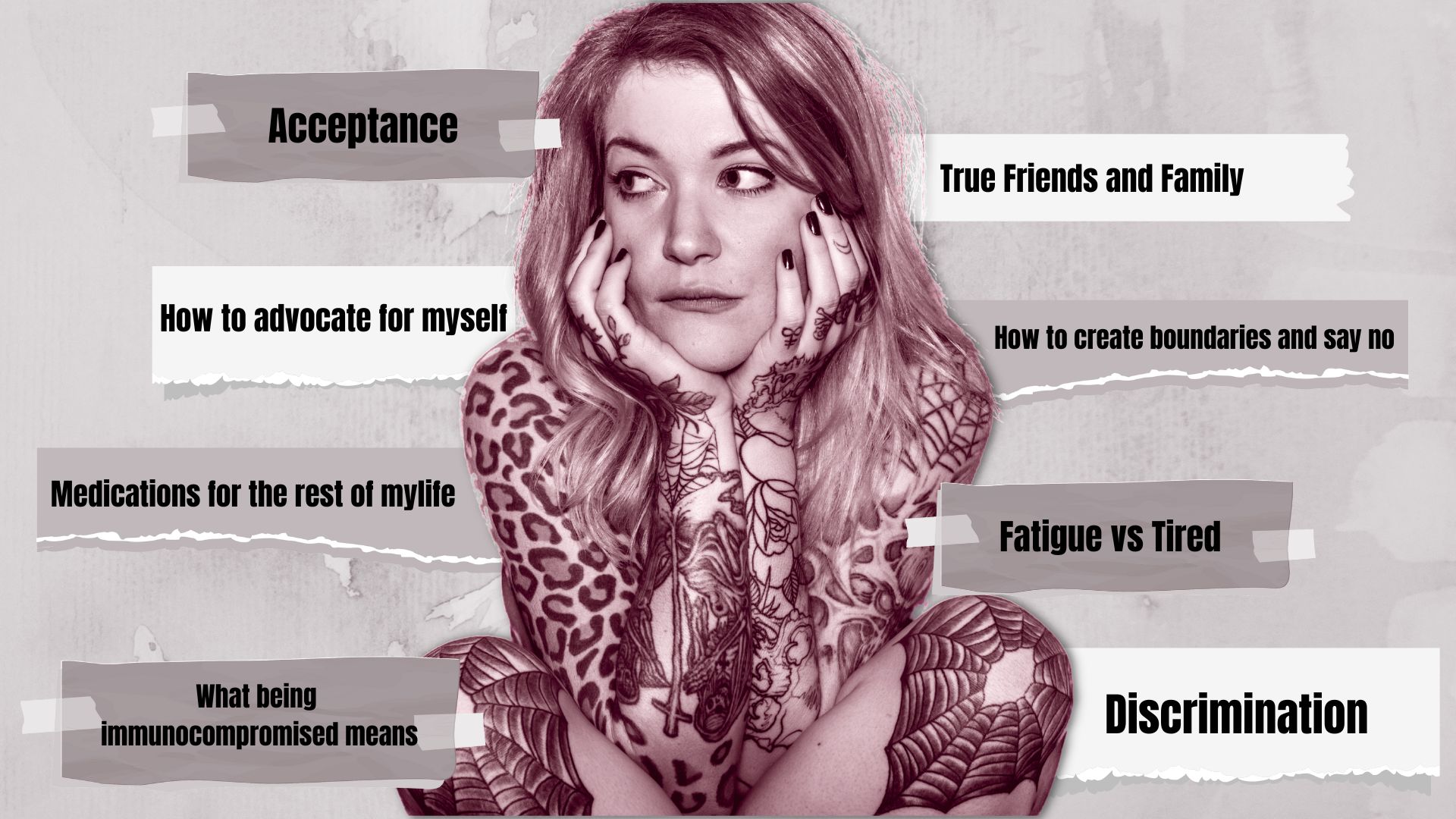Ever since I was young much of my self-expression came from what I wore.
Before I was diagnosed with rheumatoid arthritis in my late 20s, my personal style had a flair for the dark and often sexy. But RA completely changed my definition of flair — or rather, flare.
I admired, and still do, goth characters like Elvira, Lily Munster, Betty Page, and Morticia Addams. To me, these queens of darkness defined beauty and I wanted to achieve my version of that look. High heels? Loved them and wore them often. Corsets? Cinch them tighter, please. I spent hours perfecting my appearance with ample energy to go out all night long.
My self-expression was what made me feel like “me.” It also defined my career; as an aesthetician, I loved helping other people feel like their best versions of themselves.
Rheumatoid arthritis changed all of that. It ultimately forced me to quit my job and go on disability, changing my career path. It forced me to change how I expressed myself through my clothes, beauty and self-care routine, and hobbies. It even changed my personality and how I get self-worth. Much of this has been a seismic shift — and I’m still adjusting.
But it’s not as bad as maybe I’m making it out to be.
Here is how rheumatoid arthritis changed my personal style — and, how I’ve come to see this change as not just loss, but rather, adaptation.
Arthritis Changed My Interests and Hobbies
I used to love getting ready to go out dancing or to concerts. I often went on stage performing with bands as a go-go dancer. One night you might find me in burlesque show; on another, stage diving to death metal. Every weekend I was out at some concert or club, dancing the night away freely.
But then all of that became too painful and exhausting.
Gone were the days I could be out all night and sometimes still able to go to work the next day. In living with RA, I’ve realized I have to be home by 8 p.m. or else I would turn into an arthritic pumpkin.
Now I find my best, most productive hours now are in the morning and early afternoon, often with a rest in between.
Arthritis made me change a lot of the ways I spent my free time and energy. I replaced the money I used to spend on going to concerts with more important things like exercise equipment, supplements, cooking gadgets, and whatever self-care items might provide some pain relief.
Arthritis Changed My Self-Care Routine
As an aesthetician, I made a living providing people with opportunities for self-care. Almost every day I helped women get ready for a big event or relax. I valued my own self-care routine too, until my rheumatoid arthritis made it difficult for me to do either.
I used to be able to do my own daily self-care plus eight to nine hours’ worth of professional manicures, pedicures, facials, massages, waxes, and make-up applications for others. Now I find I often need to give myself self-care during self-care. When I’m experiencing RA fatigue, I need to rest after taking a shower. I have to take breaks while I do my own hair and makeup. Some days, even washing my faces causes pain in my hands and shoulders.
I’ve also had to rethink the kinds of products and procedures my body can handle. Before RA I was able to wax my hair, but now my skin is more sensitive and tears easily. I’m also overly sensitive to products with too many artificial dyes and fragrances. I try to stick to more natural products to avoid extra irritation.
RA also increased my photosensitivity. I need to carefully prepare for any sun exposure because my eyes will burn in the sunlight, as will my skin. Picking the right sunscreen is key: I need one without harsh chemicals but also extra protection.
Arthritis Changed My Approach to Hair and Make-up
I used to fuss about blow drying and styling my hair. Insecurities made me frequently fiddle with the color. I’ve been many different shades of blond, red, brunette, and jet-black — and back again.
But my need to have great hair faded away with my RA diagnosis. I just cannot spend the time on it like I used to. I have to use the little energy I have on other things. While I still do my hair, I choose simple looks — pulled back or hanging loose. At least my hair is healthier now that I do less with it.
The same is true for my make-up routine. I used to wear make up a lot more often — certainly every day for work. When I stopped working, I no longer needed to wear make-up consistently.
And I found I no longer wanted to.
Over time, it seemed, my RA was changing my priorities.
I needed to spend my limited energy on more important things. Making healthy, home-cooked meals was a better use of my time than experimenting with eyeliner.
Arthritis Changed How I Dress
I used to wear what is known in punk and heavy metal culture as a “battle vest” or “kutte” — essentially a jean or leather vest covered in band patches and pins. But I had to stop wearing mine because the weight of it would instantly cause my arthritis in that area to become aggravated.
Now I often opt for easy and comfortable. Fabric matters; the softer and lighter, the better.
Tags? No thank you. Heavy fabric? I can already feel the neck pain.
Putting any fabric on my joints when they’re burning in pain can spell instant discomfort. For this reason, I am often in a light cotton tank top and shorts above my knees. I wear easy-to-remove light cotton bras to maximize my comfort. Did I mention I love workout clothes and PJs?
I might be one of the few people who still buys their clothes in stores rather than online.
I can’t risk buying something in an uncomfortable fabric or fit, then having to use the little energy I have returning it.
Arthritis Changed My Love of Footwear
Being that I am 5 foot nothing, I was big into wearing high heels prior to my RA diagnosis. For a small portion of my young life, I was able to wear 8-inch heels to go-go dance on stage without any pain or balance problems. Those sexy stilettos wouldn’t even fit on these poor feet of mine now.
I still spend hours trying to find the perfect shoes, but my definition of perfect is wildly different. I don’t care as much about how they look but about whether my feet can tolerate walking in them for more than a couple city blocks.
And my favorite footwear these days is sometimes none at all. When my feet are flaring, I have to be barefoot.
Arthritis Changed My Personality
It’s one thing to recognize that my RA made me use different sunscreen or forgo shoes with sky-high heels. But it’s another to admit that I am less bubbly and less carefree than I used to be.
Being diagnosed with a serious chronic illness that zaps you of your energy and mobility will make you more serious. Many of us who live with rheumatoid arthritis or other chronic illnesses are not just struggling with our physical pain and symptoms, but also mental health conditions like anxiety and depression. It’s not always easy to be positive and upbeat.
Sometimes I fear that arthritis is aging me too quickly. I am losing a lot of what I had in common with peers around my age because it doesn’t relate to my life anymore.
Arthritis Changed My Self-Worth
I often mourn the old me — the friendly, bubbly, energetic girl I once was. But arthritis has also made me resilient and wiser as it has changed my focus in life. That happens when your everyday life becomes a fight against a chronic illness.
I have moments where sadness creeps in and I am overwhelmed with emotions because I wish I could be like other women — those who have capable bodies and can make fashion choices and follow beauty routines without the same considerations and sacrifices I have to make.
But if there is anything I have learned from my journey with chronic illness, it is to not compare myself to others, including the old me.
From a young age, I’ve always been one to want to express myself freely without the judgement of others. But because of my goth looks, I would often field comments on my appearance. People called me a “freak” and questioned why I chose to look so different from everyone else.
I wore my self-expression very visibly — and was criticized for it.
Now it’s the opposite. I’ve adapted a much more mellow appearance because of limitations from rheumatoid arthritis, which is an often invisible illness. While I’m no longer judged for looking different, I instead have to contend with comments that question how sick I really am or how someone “young and healthy” like me could have arthritis.
That’s because I don’t look their misconception of what a woman living with arthritis is.
But you know what? Looks are deceiving.
Be a More Proactive Patient with ArthritisPower.
Join CreakyJoints’ patient-centered research registry to track your symptoms, disease activity, and medications — and share with your doctor. Learn more and sign up here.






